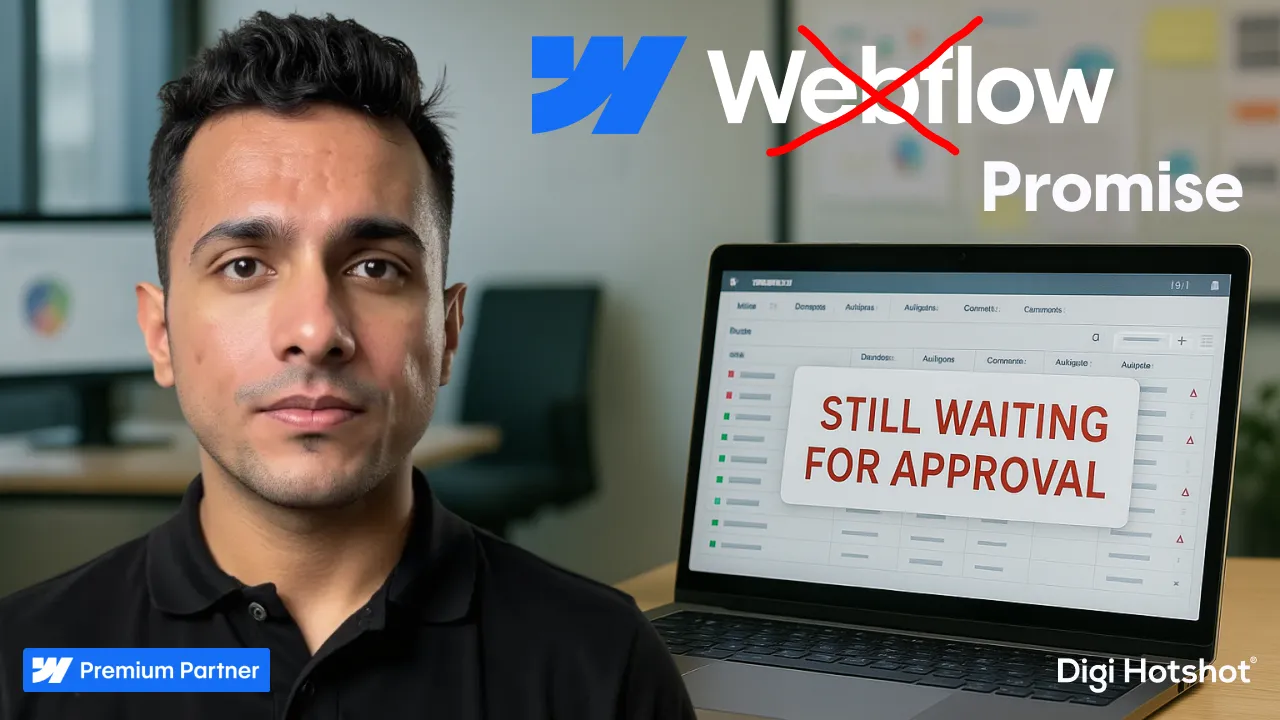Published On:
July 23, 2025

Parth Gaurav
Founder & CEO

Your marketing team just spent three weeks planning the perfect campaign launch.
The landing page request? Still sitting in the dev backlog.
You migrated to Webflow to fix this. No more tickets. No more delays. Just drag, drop, and publish.
But two weeks in, you're still blocked. Your marketers can’t make updates without pinging a designer. Page QA takes days. The “no-code” dream feels like smoke and mirrors.
As a Webflow Premium Partner, we’ve helped 30+ B2B brands navigate this exact gap — and the truth is this:
Webflow is only as autonomous as the system you build on it.
In this post, we’ll show you:
Let’s start by breaking the myth open.
Webflow is a no-code visual development platform — but teams still need developer support if the system isn’t set up for marketing autonomy.
The phrase "no-code" is misleading. It implies marketers can do everything alone. But Webflow is still development — just visual. Without pre-built components, systemized governance, and clear handoff rules, marketers still get blocked.
In one recent migration, a $20M SaaS client moved their entire marketing site to Webflow. But weeks after launch, campaign updates still ran through the design team. Why? Because their Webflow system lacked:
The platform wasn’t the problem. The setup was. In 2025, with Webflow's AI Assistant and AI Site Builder features launched. Teams can generate site structures from prompts, but without tailored components and training, even these tools fall short of delivering seamless marketer control.
Key takeaway: If you migrate without a componentized system, Webflow becomes another bottleneck — just prettier.
Without the right systems in place, Webflow bottlenecks shift from engineering to design, process, and onboarding.
Most teams expect dev bottlenecks to vanish. But unless your Webflow build is structured with marketers in mind, three new friction zones appear:
In our enablement sessions, we often hear:
“I thought I’d be able to update this myself, but I don’t want to break anything.”
Webflow isn’t a magic fix. It’s a system — and like any system, it needs rules, tools, and ownership.
Key takeaway: Most Webflow failures aren’t technical. They’re operational.
Autonomy means your marketing team can go from campaign idea to live page in under 48 hours — without depending on dev or design.
In a successful Webflow setup, your team has:
We recently helped a fintech brand reduce landing page launch time from 3 weeks to 3 days. The difference wasn’t Webflow itself — it was the system built around it:
This is the promise of Webflow — not just a new platform, but a new way to operate.
Key takeaway: Autonomy isn’t a feature. It’s an outcome of deliberate design.
Avoid the no-code trap by building for autonomy from day one — not just aesthetics.
Here’s a 5-point checklist to make sure you don’t swap one bottleneck for another:
Want to make this process easier? Grab our SEO-Safe Webflow Migration Checklist — it covers every step from audit to handoff.
Key takeaway: Success isn’t in the migration — it’s in the system you deploy post-migration.
Webflow gives you the power to move fast — but only if you build it right.
“No-code” is a vision, not a guarantee. If you want your marketing team to own the website, you need more than a platform. You need a system designed for speed, ownership, and scale.
Want the complete roadmap? Check out our WordPress to Webflow Migration Timeline — our 7-phase process covers everything from discovery to go-live, including realistic timelines and stakeholder coordination.
Or get started right now with the SEO-Safe Migration Checklist
Last Updated:
July 23, 2025
Book a 30-minute discovery call. We'll discuss your current challenges and show you exactly how we can help.
